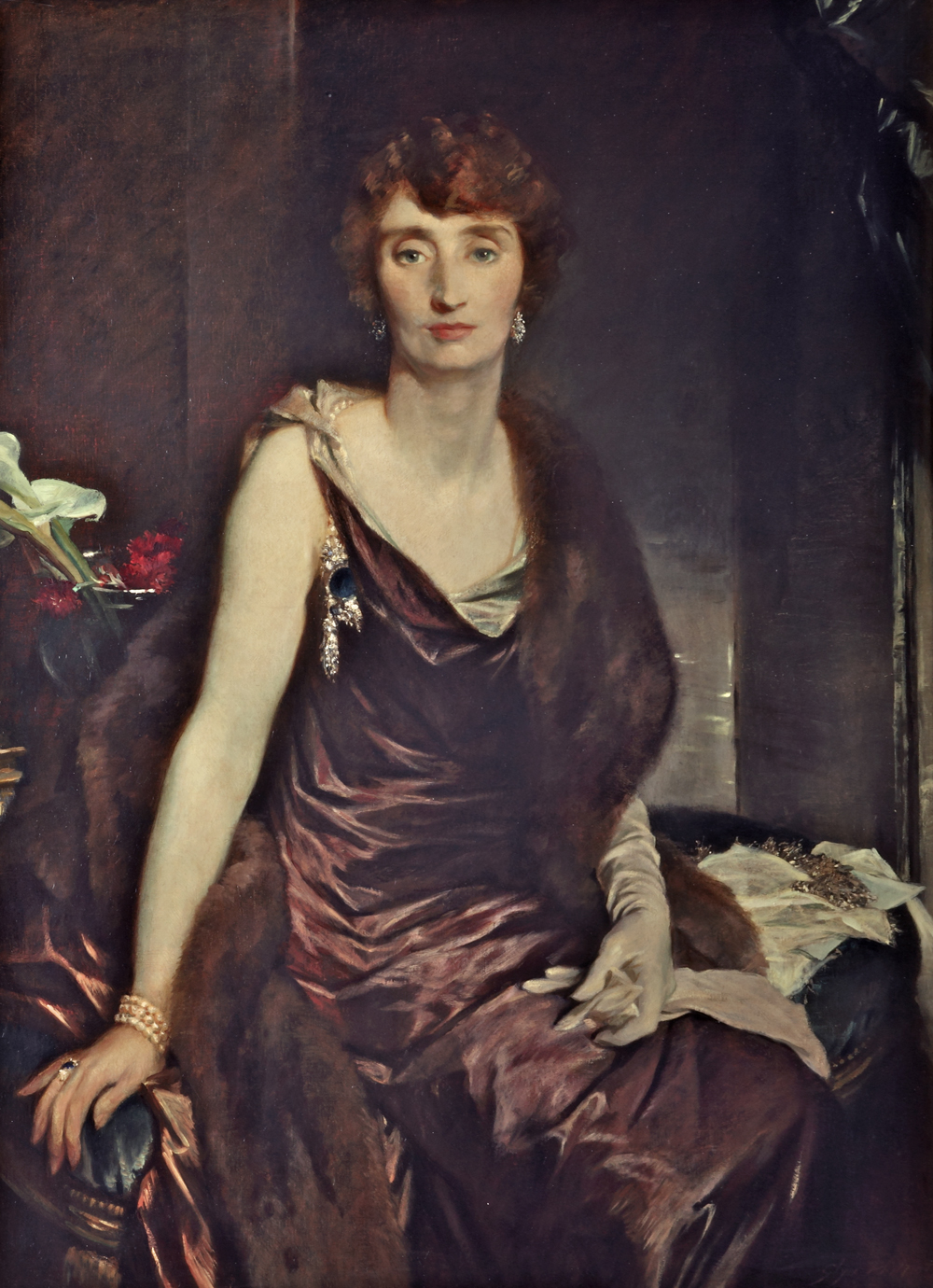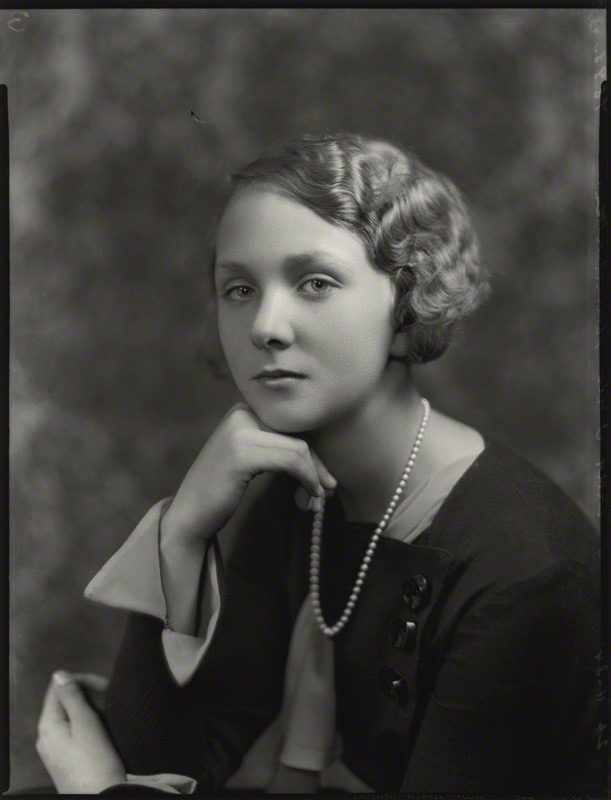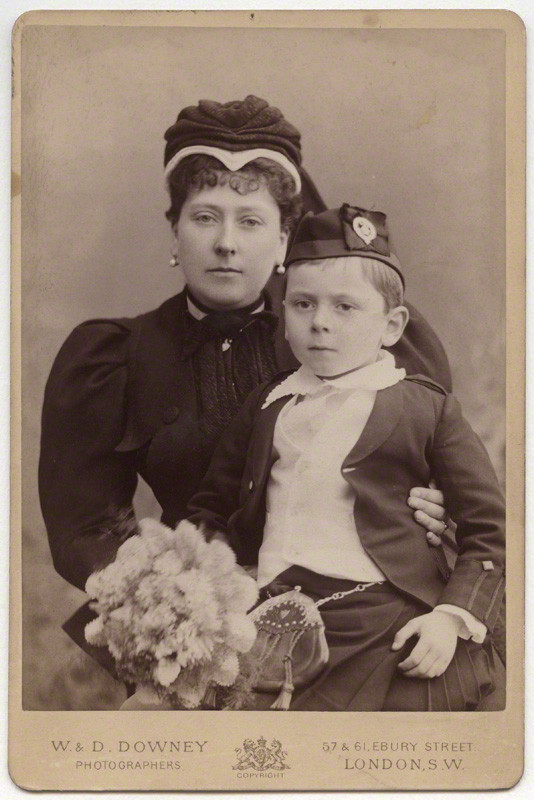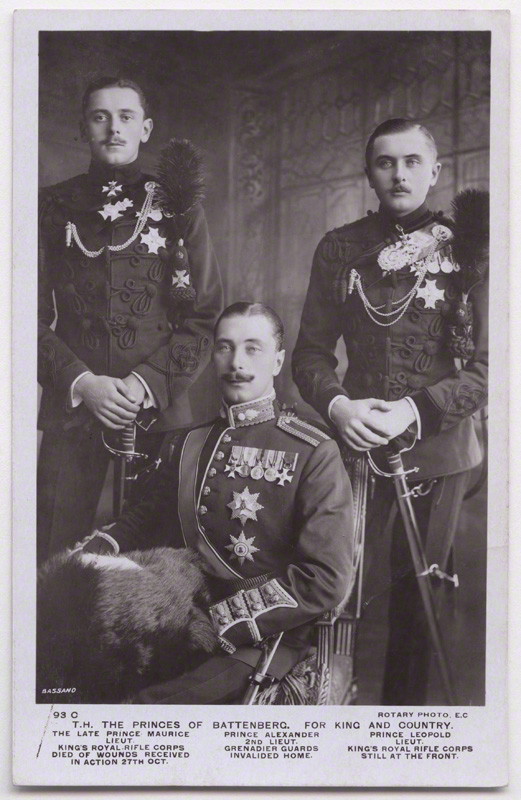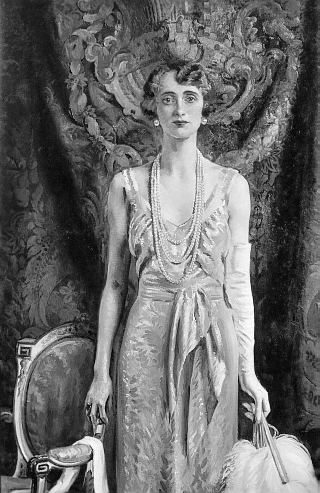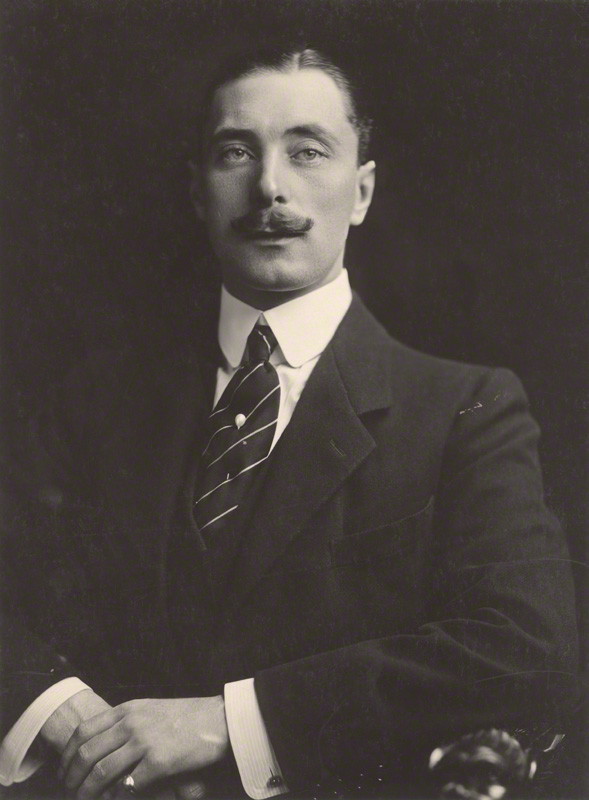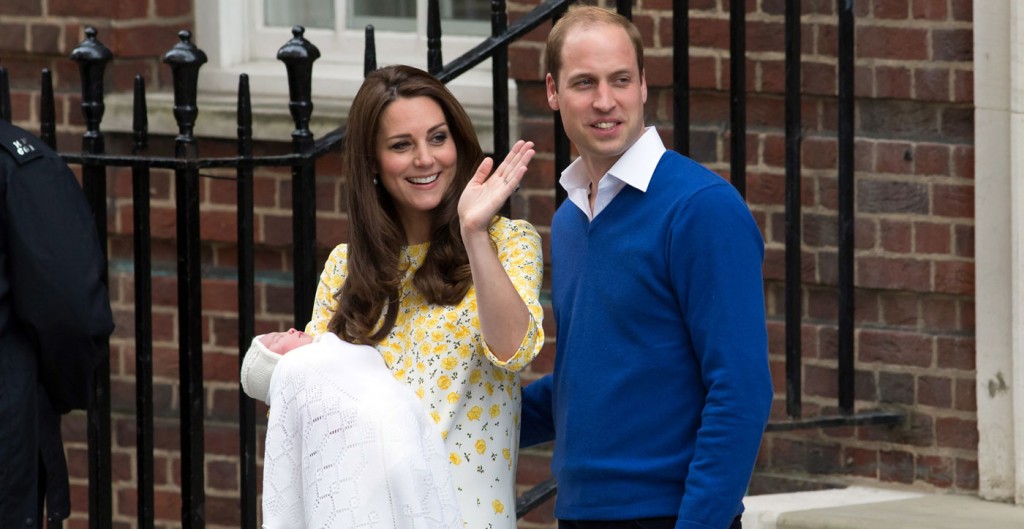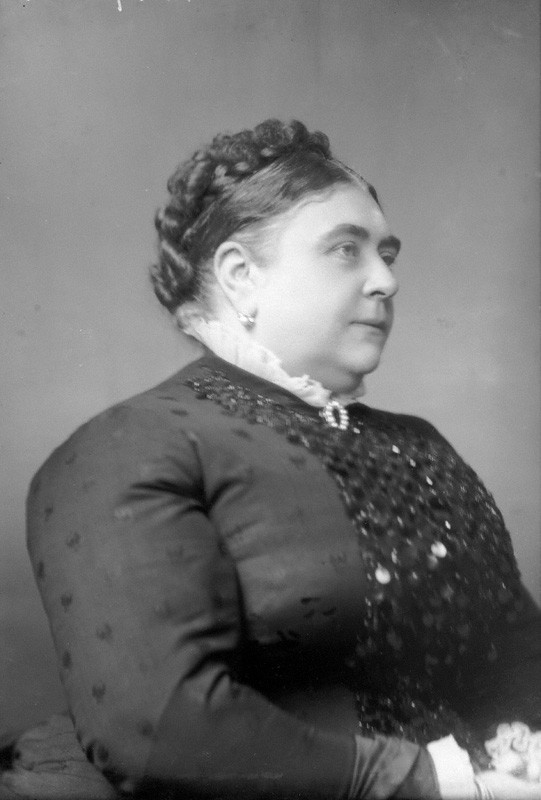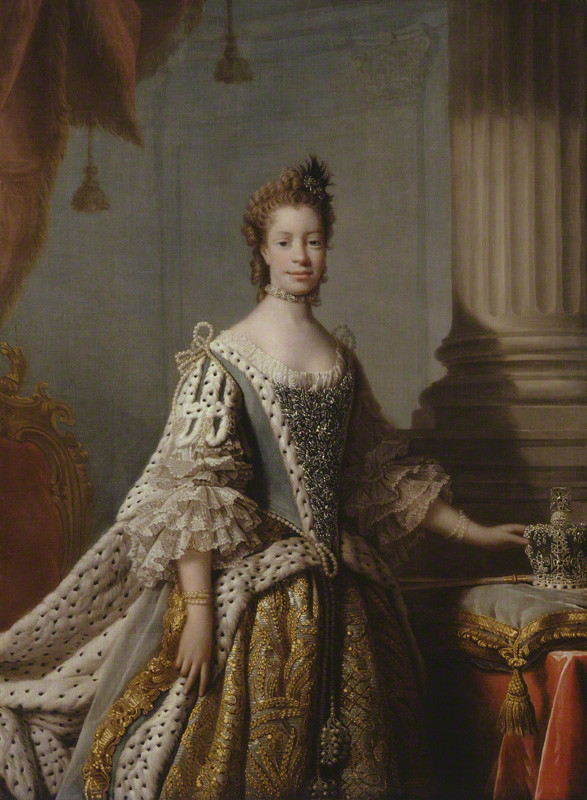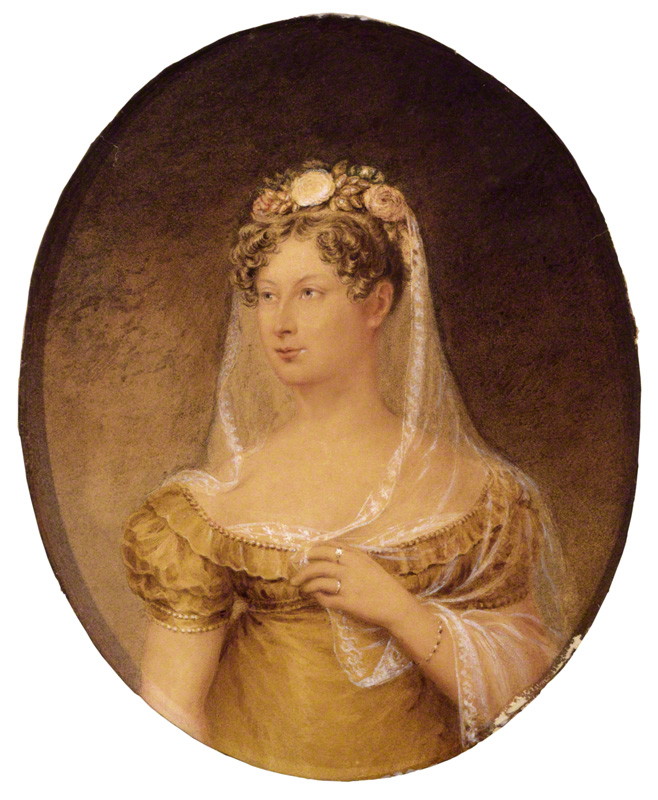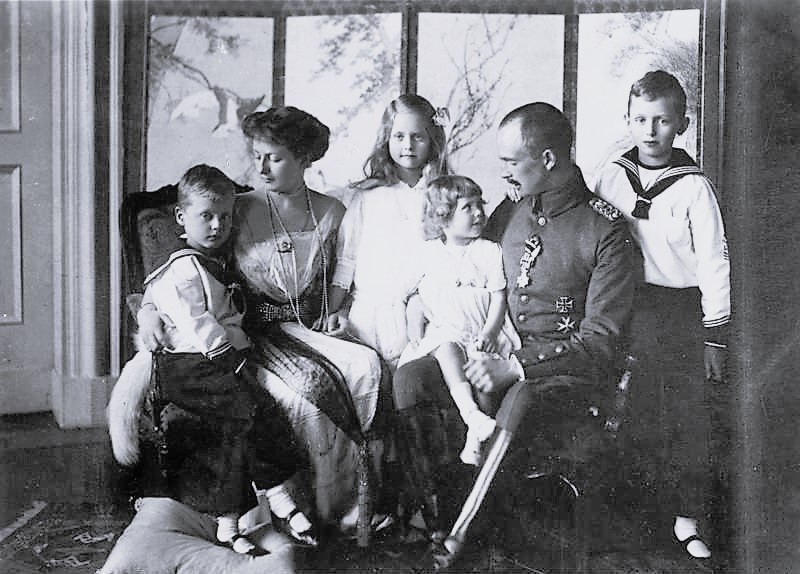by Susan Flantzer © Unofficial Royalty 2015

Princess Beatrice of the United Kingdom; Credit – Wikipedia
Princess Beatrice was born on April 14, 1857, at Buckingham Palace in London, England. She was the youngest of the nine children of Queen Victoria of the United Kingdom and Prince Albert of Saxe-Coburg and Gotha. Her christening was held on June 16, 1857, at the Private Chapel at Buckingham Palace. The princess was named Beatrice Mary Victoria Feodore. Mary was for Princess Mary, Duchess of Gloucester, the last surviving child of King George III, who had died two weeks after Beatrice was born. Feodore was for Queen Victoria’s half-sister, Feodora, Princess of Hohenlohe-Langenburg.
Princess Beatrice’s godparents were:
Beatrice had four brothers and four sisters:
- Victoria, Princess Royal (1840-1901) married Friedrich III, German Emperor and King of Prussia, had four sons and four daughters
- King Edward VII of the United Kingdom (1841-1910) married Princess Alexandra of Denmark, had two sons and three daughters
- Princess Alice (1843-1878) married Ludwig IV, Grand Duke of Hesse and by Rhine, had two sons and five daughters
- Prince Alfred, Duke of Edinburgh, Duke of Saxe-Coburg and Gotha (1844-1900) married Grand Duchess Marie Alexandrovna of Russia, had one son and four daughters
- Princess Helena (1846-1923) married Prince Christian of Schleswig-Holstein, had two sons and two daughters
- Princess Louise (1848-1939) married John Campbell, Marquess of Lorne, 9th Duke of Argyll, no issue
- Prince Arthur, Duke of Connaught (1850-1942) married Princess Louise Margaret of Prussia, had one son and two daughters
- Prince Leopold, Duke of Albany (1853-1884) married Princess Helena of Waldeck and Pyrmont, had one son and one daughter
Beatrice’s parents realized she would be their last child, and she was treated differently from her siblings. Prince Albert described her as “an extremely attractive, pretty, intelligent child – indeed the most amusing baby we have had.” Known as Baby in the family, Beatrice filled a void for her parents when her eldest sister Victoria, Princess Royal married less than a year after her birth and left to live in Prussia with her new husband. By the time Beatrice was three years old, she was an aunt twice over from that marriage.
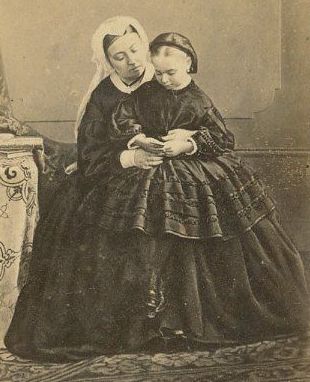
Beatrice and her mother; Credit – Wikipedia
On December 14, 1861, Prince Albert died at the age of 42. Beatrice was only four and a half and had lost one of her principal role models. Queen Victoria was grief-stricken. The night Prince Albert died, Queen Victoria went into the nursery and carried the sleeping Beatrice to her own bed, where she lay unable to sleep, hugging Beatrice while wrapped in the bedclothes of her deceased husband. Because of her mother’s prolonged grief and mourning, Beatrice’s life would forever be shaped by her father’s death. She became a great solace to her mother, and as the years progressed, Queen Victoria hoped that Beatrice would always be her constant companion.
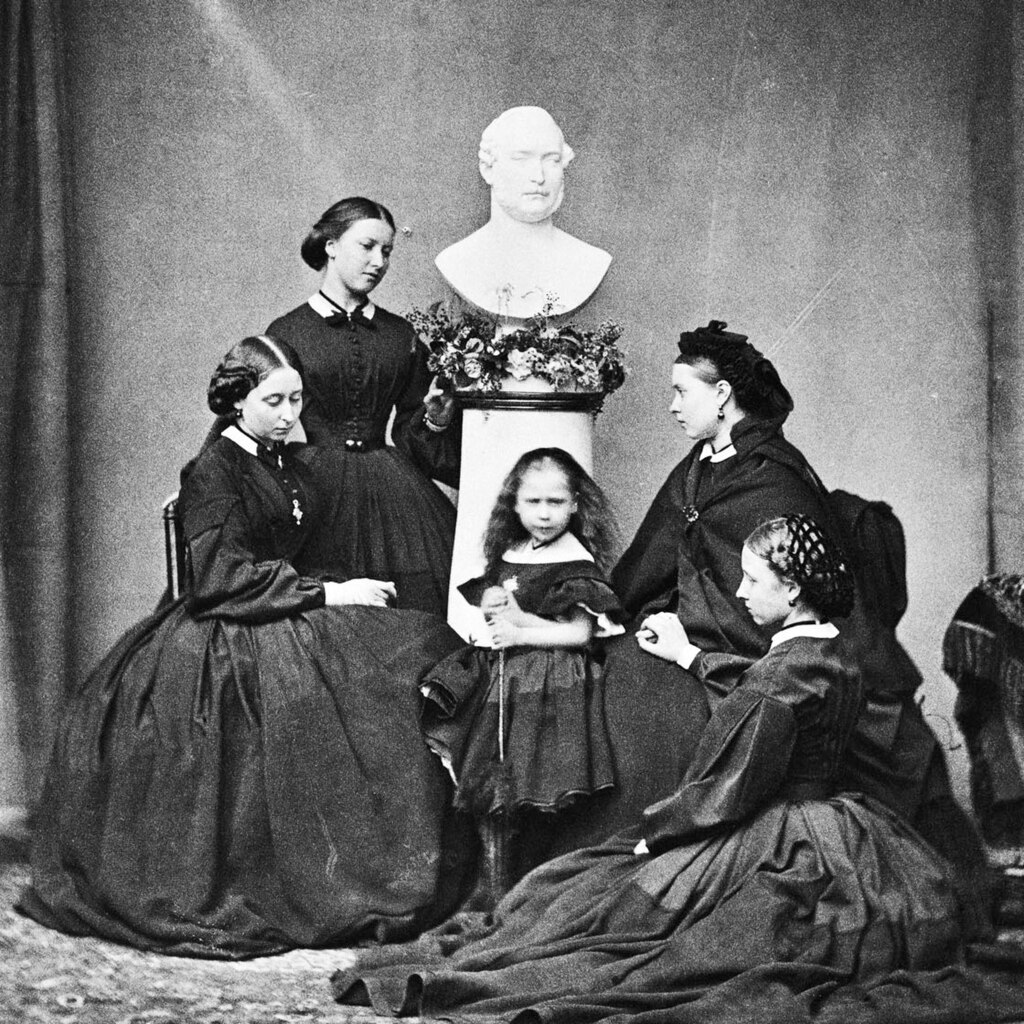
Beatrice (center) and her sisters mourning their father; Credit – Wikipedia
Despite her father’s death, Beatrice’s education proceeded according to the plan Prince Albert devised for his children. She received lessons in French and German and a hands-on history education by visiting historical sites. Unlike her mother, Beatrice eventually had clear and legible handwriting and was an accurate speller. By the age of fifteen, Beatrice was writing letters on behalf of Queen Victoria, and she was developing into the quiet, attentive, and devoted helper the Queen wanted. When the last of her sisters married and left home, Beatrice took on the job of her mother’s full-time personal assistant.

Beatrice in 1868; Credit – Wikipedia
At the age of six, Beatrice declared, “I don’t like weddings at all. I shall never be married. I shall stay with mother.” Queen Victoria said of Beatrice, “She is my constant companion and hope and trust will never leave me while I live.” Nevertheless, Beatrice did have suitors. During the 1870s, there was talk of Beatrice marrying Louis Napoleon, the only child of the exiled French Emperor, Napoleon III, and his wife Eugénie, who had settled in England. However, in 1879 Louis Napoleon died in the Anglo-Zulu War. After the death of their sister Alice, Grand Duchess of Hesse and by Rhine from diphtheria in 1878, Beatrice’s eldest brother, the Prince of Wales (Bertie), suggested that Beatrice marry Alice’s widower, Ludwig IV, Grand Duke of Hesse and by Rhine. However, it was illegal for Beatrice to marry her sister’s widower. The Prince of Wales supported a bill in Parliament that would allow such marriages. The bill passed in the House of Commons, but failed in the House of Lords.
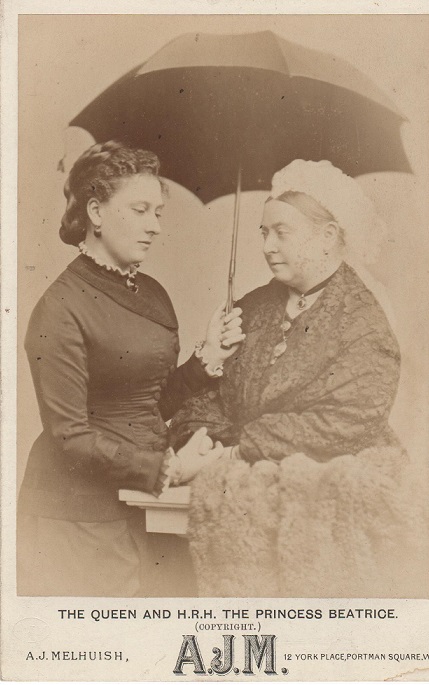
Beatrice and Queen Victoria, 1880s; Photo Collection of Susan Flantzer
In 1884, while attending the wedding of her niece Princess Victoria of Hesse and by Rhine and Prince Louis of Battenberg, Princess Beatrice fell in love. The man who won Beatrice’s heart was Prince Henry of Battenberg, the groom’s brother. Henry was the third of the four children of Prince Alexander of Hesse and by Rhine and Countess Julia Hauke. As his parents’ marriage was morganatic, Henry and his siblings took their titles from their mother, who had been created Countess of Battenberg, elevated to Princess of Battenberg in 1858. Henry’s older brothers, Alexander (Sandro) and Louis, had shown interest in Beatrice in the past but were unsuccessful.
Beatrice told her mother that she wanted to marry Henry. Queen Victoria reacted with silence. For seven months, from May to November 1884, Queen Victoria and Beatrice lived together, and the Queen did not speak to Beatrice, instead, the Queen communicated with Beatrice by notes. Members of the family, including the Prince and Princess of Wales (Bertie and Alexandra), Alice’s widower Ludwig, and Beatrice’s eldest sister (Vicky) tried to persuade the Queen to agree to Beatrice’s marriage. Queen Victoria finally realized that Beatrice would not back down and offered her some conditions that must be met. Henry must renounce his career, nationality, and home and agree to live with Beatrice and the Queen. By the end of 1884, Queen Victoria and Beatrice were reconciled, and a wedding was being planned.
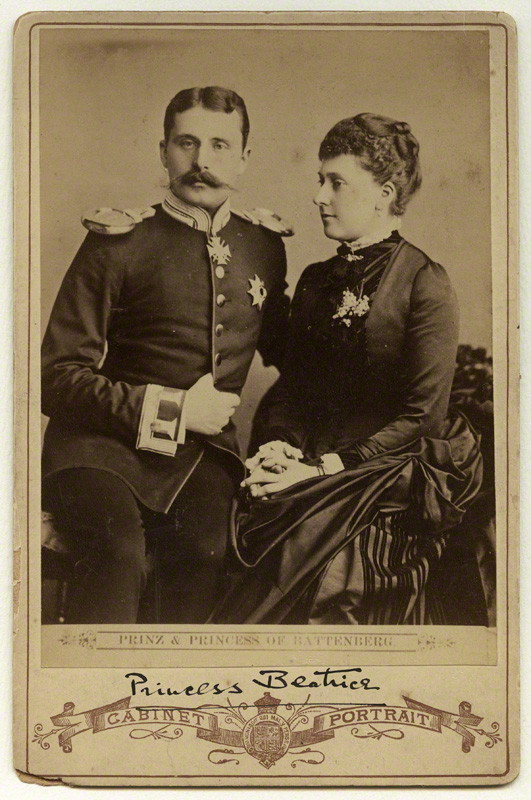
Prince Henry Maurice of Battenberg; Princess Beatrice of Battenberg by Unknown photographer albumen cabinet card, 1880s NPG x32978 © National Portrait Gallery, London
Beatrice and Henry (called Liko) were married on July 23, 1885, at Saint Mildred’s Church in Whippingham, Isle of Wight, England, near Queen Victoria’s beloved home Osborne House. Queen Victoria allowed Beatrice to wear the Honiton lace and veil that she had worn on her wedding day, the only one of her daughters allowed to do so. The ten royal bridesmaids were all nieces of Princess Beatrice: Princess Alix and Princess Irene of Hesse and by Rhine; Princess Alexandra, Princess Marie and Princess Victoria Melita of Edinburgh; Princess Louise, Princess Maud and Princess Victoria of Wales; Princess Marie Louise and Princess Helena Victoria of Schleswig-Holstein.

Wedding of Princess Beatrice of the United Kingdom and Prince Henry of Battenberg (see below for who’s who in the photo); Photo Credit – www.victorian-gothic.co.uk
THE BACK: (L-R): Prince Alexander of Bulgaria, Princess Louise of Wales, Princess Irene of Hesse and by Rhine, Princess Victoria of Wales, Prince Franz Joseph of Battenberg * THE MIDDLE: (L-R): Princess Maud of Wales, Princess Alix of Hesse and by Rhine, Princesses Marie Louise and Helena Victoria of Schleswig-Holstein * THE FRONT: (L-R): Princesses Victoria Melita, Marie and Alexandra of Edinburgh and the bridal couple.
Beatrice and Henry had three sons and one daughter. The Spanish Royal Family descends from their marriage.
- Prince Alexander of Battenberg, later Alexander Mountbatten, 1st Marquess of Carisbrooke (1886 – 1960), married Lady Irene Denison, had issue
- Princess Victoria Eugenie of Battenberg (1887 – 1969), married King Alfonso XIII of Spain, had issue
- Prince Leopold of Battenberg, later Lord Leopold Mountbatten (1889 – 1922), unmarried, a hemophiliac
- Prince Maurice of Battenberg (1891 – 1914), unmarried, killed in action during World War I

Beatrice and her children in 1900; Credit – Wikipedia
Unfortunately, Beatrice was a hemophilia carrier. Her son Leopold was a hemophiliac, and her daughter Victoria Eugenie was a carrier. Leopold died after an emergency operation at Kensington Palace when he was almost 23. Victoria Eugenie, known as Ena, brought hemophilia into the Spanish Royal Family. Two of Ena’s sons had hemophilia. Her son Alfonso died in a car accident at age 31, and her son Gonzalo also died as the result of a car accident at age 20.
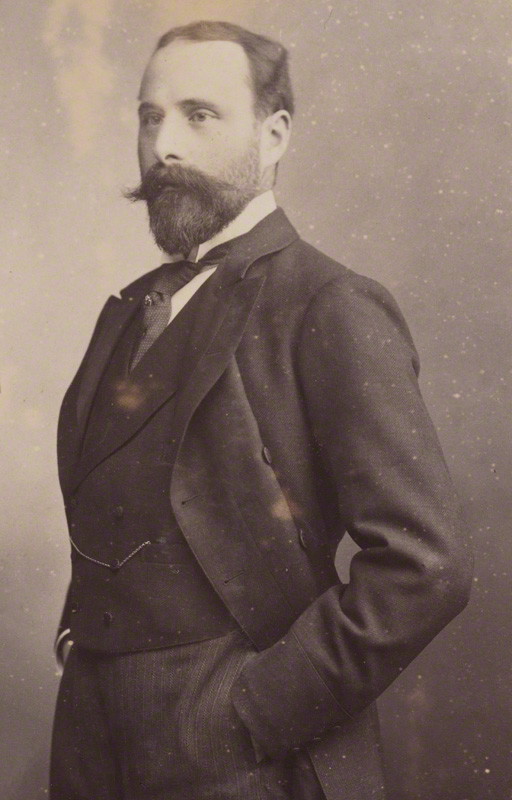
Prince Henry of Battenberg by Walery, albumen print, 1895 NPG P1700(21b) © National Portrait Gallery, London
Beatrice and Henry kept their promise and lived with Queen Victoria, and Beatrice remained her full-time confidante and secretary. Henry was often bored by the lack of activity. To give him more to do, Queen Victoria appointed him Governor of Carisbrooke Castle and Captain-General and Governor of the Isle of Wight in 1889, Lieutenant-Colonel in the Army in 1887, Colonel in 1893, and a member of the Privy Council in 1894. In November 1895, Henry persuaded Queen Victoria to allow him to go to West Africa to fight in the Anglo-Ashanti Wars. Henry arrived in Africa on Christmas Day of 1895. By January 10, 1896, Henry was sick with malaria, and it was decided to send him back to England. Henry died aboard the ship HMS Blonde off the coast of Sierra Leone on January 20, 1896, at the age of 37. His funeral took place on February 5, 1896, at St. Mildred’s Church on the Isle of Wight where he had been married. He was interred at St. Mildred’s Church in what became known as the Battenberg Chapel.
Following Henry’s death, Beatrice remained her mother’s companion and secretary. As Queen Victoria aged, she relied more heavily on Beatrice to deal with correspondence and other matters. The Queen realized that Beatrice needed her own place, so she gave Beatrice the Kensington Palace apartments that she and her mother had once occupied. The Queen appointed Beatrice Governor of Carisbrooke Castle and Captain-General and Governor of the Isle of Wight, positions vacated by Henry’s death. For the rest of her life, Beatrice conscientiously undertook the duties related to these positions.
Queen Victoria died on January 22, 1901. Beatrice continued to make public appearances, but her position diminished during the reign of her brother King Edward VII. For thirty years, Beatrice transcribed and edited her mother’s journals, which Victoria had kept since 1831, when she was 12 years-old. Queen Victoria had ordered Beatrice to delete material that might prove hurtful to living people. Two-thirds of the content of the original journals were deleted. These deletions distressed Beatrice’s nephew, King George V and his wife Queen Mary, who could do nothing, and many historians have felt that valuable information had been lost forever. The 111 notebooks that Beatrice copied are kept in the Royal Archives at Windsor Castle.
Beatrice’s three sons served during World War I, and sadly, Maurice, her youngest son, was killed in action. Due to anti-German sentiment during World War I, King George V issued Letters Patents on July 17, 1917 “declaring that the name Windsor is to be borne by his royal house and family and relinquishing the use of all German titles and dignities.” Beatrice’s two surviving sons relinquished their German styles and titles and anglicized their name to Mountbatten. The older son Alexander was created Marquess of Carisbrooke, and Leopold was granted the rank and precedence of the younger son of a marquess, becoming Lord Leopold Mountbatten.

An elderly Beatrice; Credit – Wikipedia
As she aged, Beatrice became very infirm with arthritis and needed to use a wheelchair. She translated and edited the memoirs of her great-grandmother Augusta, Duchess of Saxe-Coburg and Gotha, which were published under the title In Napoleonic Times. Beatrice’s last home, Brantridge Park in West Sussex, England, was owned by Queen Mary’s brother, Alexander Cambridge, 1st Earl of Athlone, and his wife, Princess Alice, Countess of Athlone, who was Beatrice’s niece. At that time, the Athlones were in Canada, where the Earl was Governor-General.
It was at Brantridge Park, that Beatrice died on October 26, 1944, at the age of 87, the last surviving child of Queen Victoria and Prince Albert. Beatrice’s funeral was held at St. George’s Chapel, Windsor Castle, on November 3, 1944. Queen Elizabeth, the wife of King George VI, Beatrice’s great-nephew, led Queen Victoria Eugenie of Spain, Beatrice’s daughter, to the open vault in the choir where they both curtsied. Behind them in the choir stalls stood a young woman dressed in black, 18-year-old Princess Elizabeth, the future Queen Elizabeth II. Beatrice’s coffin remained in the Royal Tomb House at St. George’s Chapel until August 28, 1945. At that time, the coffin was taken to St. Mildred’s Church in Whippingham, Isle of Wight, England and buried with her husband in the Battenberg Chapel.

Tomb of Princess Beatrice and her husband Prince Henry of Battenberg; Credit – Wikipedia
This article is the intellectual property of Unofficial Royalty and is NOT TO BE COPIED, EDITED, OR POSTED IN ANY FORM ON ANOTHER WEBSITE under any circumstances. It is permissible to use a link that directs to Unofficial Royalty.
Recommended Books
- The Last Princess: The Devoted Life of Queen Victoria’s Youngest Daughter – Matthew Dennison
- The Shy Princess – David Duff
Queen Victoria Resources at Unofficial Royalty
